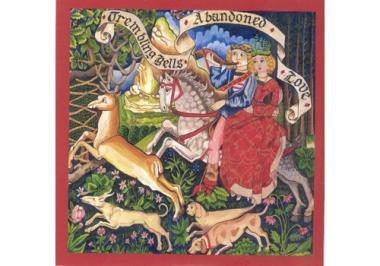Trembling Bells
Abandoned Love
(Honest Jon’s)
Folk music seems to be in a process of continual resurrection. British folk is the latest strand to undergo a revival, with young musicians exploring both traditional songforms and folk-rock hybrids pioneered by the likes of Fairport Convention. The Scottish quartet Trembling Bells add something new to this lineage with their remarkable second album. They’re so adept at their craft that original songs like sea shanty “Adieu, England” and medieval chorale “September Is the Month of My Death” sound authentic enough to be mistaken for standards. But the group ensure their music doesn’t become mired in reverence by adding swaths of fuzzed-out guitar and horns that wouldn’t be out of place on a Stax record. Lavinia Blackwall’s trained soprano occasionally gets too arch, but particularly on bawdy songs, there’s palpable joy to hearing the old made new once again. —Jeff Jackson
Ratatat
LP4
(XL Recordings)
Electronic music duo Mike Stroud and Evan Mast are back in business. After finding mainstream success with production credits on rapper Kid Cudi’s debut album, the pair branch out on their fourth record. Many tracks feature spoken word sections, ranging from the hilarious to the head scratching. “Neckbrace” features brash talk about baseball bats and bullying, while “Drugs” features an extended monologue in German. Instrumentally, the album takes unexpected turns. A full string section floats in and out, as do Brian May-like guitars and video game-inspired soundscapes. Yet the most unusual sounds on the album are probably those that are most human. Several tracks feature what sounds like repetitive beat boxing. While those beats may pose a striking resemblance to the kinds of noises one hums when stuck in traffic, they’re still catchy as hell. —Michael Cimaomo
Gabor Szabo
Jazz Raga
(Light in the Attic)
Jazz Raga first appeared in 1967, and this Light in the Attic release marks its CD debut. Hungarian jazz guitarist Gabor Szabo mixed into his soundscapes elements from American jazz, traditional Hungarian music and pop rock. The international flavors don’t stop there, however—the sitar plays a strong role as well. The album begins on a strange note, with Szabo half-speaking the lyrics to “Walking on Nails” with such a stout Hungarian accent that his unusual intonations eclipse the actual music. Things mellow out from there in high ’60s style, with Szabo’s barely in-tune guitar and sitar mixing together to psychedelic effect. Szabo’s trippy, meandering guitar soloing provides the central point of interest in this hip time capsule of an album. —James Heflin



